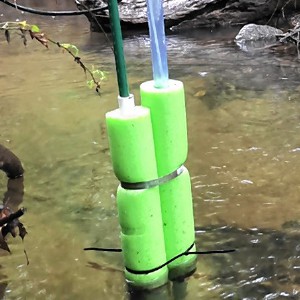A Nashua teen dies in a bizarre manner. So, going forward, what does that mean for keeping drainage systems safe?
| Published: 10-26-2016 1:37 AM |
The news, while of course tragic, was bizarre and mysterious, leading to questions that have yet to be answered.
Jacob Goulet, a 16-year-old student at Nashua North High School, was dead, but many of the factors normally associated with a teen’s death were nowhere to be found. Not this time.
This time, the tragedy had nothing to do with drugs or driving under the influence of alcohol or any of the other evils parents must contend with these days. This time, we heard about a storm drain, uncovered, dangerous and, in fact, deadly.
The huge opening led to a pipeline that led to the Merrimack River in Tyngsborough, Mass., a few miles away. That’s where Goulet’s body was found Sunday morning, spotted by a Massachusetts State Police helicopter.
Some facts have been documented. We know Nashua police were called to Bicentennial Park on Friday night about 10, responding to a report that someone may have fallen into a combined sewer and storm drainage system near the Main Street Bridge.
We know Goulet was reported missing the next day, and we know a coordinated effort was made by police, fire rescue personnel, the Division of Public Works and rescue agencies, all of whom threw all available assets into the search effort.
What we don’t know is why something that should have been covered wasn’t. Was this a case of negligence on the part of the city, or a curious teen trying to see something he had no business seeing?
Calls left for Nashua fire Chief Steven Galipeau, Nashua fire Assistant Chief Brian Rhodes and Lisa Fauteux, director of the city’s Division of Public Works, were not returned.
Article continues after...
Yesterday's Most Read Articles
A press release from the city acknowledged that the bottom line here had not yet been determined. It read, in part:
“With the immediate response and recovery efforts concluding, public works has worked to investigate all possible scenarios in which this cover may have become dislodged. After review and analysis, and following consultation with 3rd party experts, the city of Nashua has been unable to identify the exact cause of the interceptor cover being ajar.”
Perhaps we’ll never know. Meanwhile, Nashua is taking every precaution to make sure this never happens again, the press release said.
When all is said and done, all sewer interceptor covers in the city will have tamper-proof bolts and locks. Manhole covers in sidewalks and crosswalks will be inspected and also receive tamper-proof bolts. Aluminum interceptor covers will be replaced with heavier and more durable stainless steel covers. And the Division of Public Works will expand inspections of other structures in city sidewalks and crosswalks.
“It is believed,” the release read, “that these measures surpass maintenance and security precautions undertaken by other municipalities.”
So what about here, in Concord? I called Richard Radwanski, the Department of Transportation’s district engineer for District 5, which includes Concord. The DOT is responsible for the grates and manhole covers on our roadways.
Radwanski couldn’t comment on the Nashua incident without the information we’re all waiting to hear, about the interceptor and how it ended up in a place that would allow Goulet to fall 20 feet before the currents got a hold of him.
Radwanski said 99 percent of the grates and manhole covers here cover a space too small for someone to slip smoothly through. He also said these pieces of metal weigh 30 to 40 pounds, and sometimes several hundred pounds, making it no easy task to move aside.
But some holes are indeed big enough for a fall like the one Goulet took, and these covers can indeed be removed by most anyone.
“Sure, if you really wanted to,” Radwanski said by phone. “If they’re not rusted in, which they often are, but in most cases they are removable by someone who intentionally wants to do it. They’re made to stay where they are without being dislodged, from traffic or normal uses, but we’ve had them stolen too, so they can be pulled out if you have, I guess, the fortitude and will to do it.”
I asked Radwanski if new measures might be put in place, perhaps adding bolts and welding things tightly, in light of what happened in Nashua.
His response surprised me.
“It’s nothing that I have considered,” Radwanski said. “We have a pretty long history of using these without much incident. The only incidents we’ve had in recent memory was when the price of scrap metal went up and people were stealing them. But that did not last very long.”
Ted Kupper, the administrator for the state Division of Public Works, is in charge of sewer and storm drainage systems in the parking lots of state-owned buildings. He agreed with Radwanski, saying this sort of accident is “extremely rare. That’s why they have manhole covers and catch basin covers. That’s what prevents cars from being damaged or people falling into them and getting hurt.”
Maybe I’m making too big a deal here. Maybe what happened to Goulet was so freakish, so utterly strange that it won’t happen again. But the fact remains that the potential for danger exists.
The family of a Nashua teen learned that the hard way last weekend.
(Ray Duckler can be reached at 369-3304, rduckler@cmonitor.com or on Twitter @rayduckler.)
]]>


 With less than three months left, Concord Casino hasn’t found a buyer
With less than three months left, Concord Casino hasn’t found a buyer Kearsarge Middle School drone team headed to West Virginia competition
Kearsarge Middle School drone team headed to West Virginia competition Phenix Hall, Christ the King food pantry, rail trail on Concord planning board’s agenda
Phenix Hall, Christ the King food pantry, rail trail on Concord planning board’s agenda Granite Geek: Forest streams are so pretty; too bad they’re such a pain to measure
Granite Geek: Forest streams are so pretty; too bad they’re such a pain to measure
